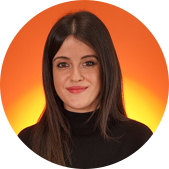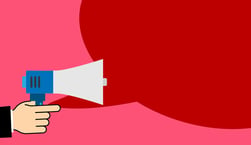Index Content
I need aerial photographs with drones to improve the corporate image of my company.
and why get a drone when you can hire an agency specialising in this type of vehicle and images?
Aerial photography with drones has something that very few devices can match, and it is a different point of view, with aerial filming that maximises the qualities of your company: facilities, processes, personnel... More and more companies are allocating part of their budget to corporate image, and this is where aerial photos with drones can make a difference.
what is the corporate image? What is the drone? Why do they complement each other? Ready to make the most of your aerial drone photography? If you blink, you're missing out.
Corporate image and drone: the perfect fusion for your company
We start from a key idea, and that is that aerial drone photography does not require a large outlay, with a small investment you can obtain a much greater return.
The corporate image is the perception, the concept and the idea that distinguishes your company, something like a set of attitudes and beliefs that consumers have about your brand. In short, the meaning that society acquires of your company constitutes the corporate image.
For its part, the drone provides a unique and differentiating personality, which is why companies resort to this technique when it comes to making a difference, because they need to show their potential public a renewed, modern and modern image adapted to the current times.
can you do marketing with drones? Yes, you can.
Marketing with drones: extra innovation
Not to mention the creativity and originality of their images and points of view in commercials, teasers and corporate videos. They are unique.
Technically, a drone is an unmanned aerial vehicle remotely controlled by a person.
Whatever your audiovisual message, the drone opens up a range of options that were not possible a few years ago. So, to give you an idea, here are some examples of aerial shots that you can record with a drone:
- Camera movements and shots with a drone. Here are some examples..
- Tracking shot (this is one of the most commonly used and consists of following a person in movement, while showing some parts of the terrain)
- Adescription shot in a vacuum (an area is filmed and then moved forward to show the landscape, no specific angle is used).
- Passing (we follow the person in order to overtake him/her at a specific moment).
- Backwards (we fly backwards, creating expectation and uncertainty).
- Frontal (the movement is frontal).
- Crane or up/down (the movement is very simple and only requires a joystick; it consists of flying the drone upwards to show the part of the landscape that was not visible at the beginning).
- Diagonal (combines forward and sideways movement).
- Lateral (used to show elements that were hidden and consists of a movement of the drone without moving the camera).
- Bird's eye view (not to be confused with the zenithal view, only the terrain is seen, without the sky, and the angle is close to 45 degrees with respect to the terrain).
- Zenith (consists of making a plane 100% perpendicular to the sky).
- Revealer (it moves from one image to another without displacement of the drone).
- Orbit (also known as point of interest and consists of making an orbit around the person, this being the axis).
- Discovery (one area of the landscape appears at the beginning and another at the end).
- Expansion (starting from a point and progressively moving away).
- Block (it is atypical and consists of choosing a destination and flying the drone in that direction all the time).
Cinematographic shots: lights, camera, action... depending on the frame..
Within the shot and aerial photography with drones, we find different options, from the detail shot (the closest), to the Italian shot (of the person's face), the close-up (similar to the previous one but without so much intensity), the medium short shot (consists of cutting the person at sternum height and leaving air above the head), the medium shot (more used than the previous one, it starts at the waist and ends leaving air above the head), American or ¾ shot (very used to show the person above the knees), whole or figure (very used to show the person below the feet and ending above the head), general (several people appear within the frame) and extreme (its objective is angular and aims to show a landscape or person who is far away).
Cinematographic shots - and photography shots! Depending on the angle of the camera..
Here are the most used shots depending on the angle... Nadir shot (it is the least used, it is almost vertical, from bottom to top), upside down (the frame is from bottom to top, where the camera should not be perpendicular to the ground, it generates power and strength), zenithal (it is used to show what happens from the height), frontal (the camera should be in front without pointing up or down), dive (it is the inverse of upside down, above the subject and tilting the camera down), profile (the shot is made perpendicular to the axis that joins two subjects), foreshortening (a conversation is recorded from behind one of the people), Dutch (the camera is tilted to create a sense of dynamism) and dorsal (from behind the person).
fly high!
Conclusions on aerial photography with drones
did you know that in the past, when there were no drones, helicopters were used in the film industry?
Being able to fly a drone is not going to make you a professional in filming or recording aerial shots, nor is it going to turn your pieces into cinematic content. To improve your corporate image you need something more, you need professional support in audiovisual images with drones.
This device can go places that helicopters can't, it captures unparalleled images, it is flexible, safe and easy to transport.
would you like to know more about the drone and its possibilities to improve your aerial photography? Do not hesitate to follow us every week on our blog.





